“Troja” (“Troy”)
State Ballet of the Gärtnerplatztheater, Munich
Forum Ludwigsburg
Ludwigsburg, Germany
October 12, 2024
by Ilona Landgraf
Copyright © 2024 by Ilona Landgraf
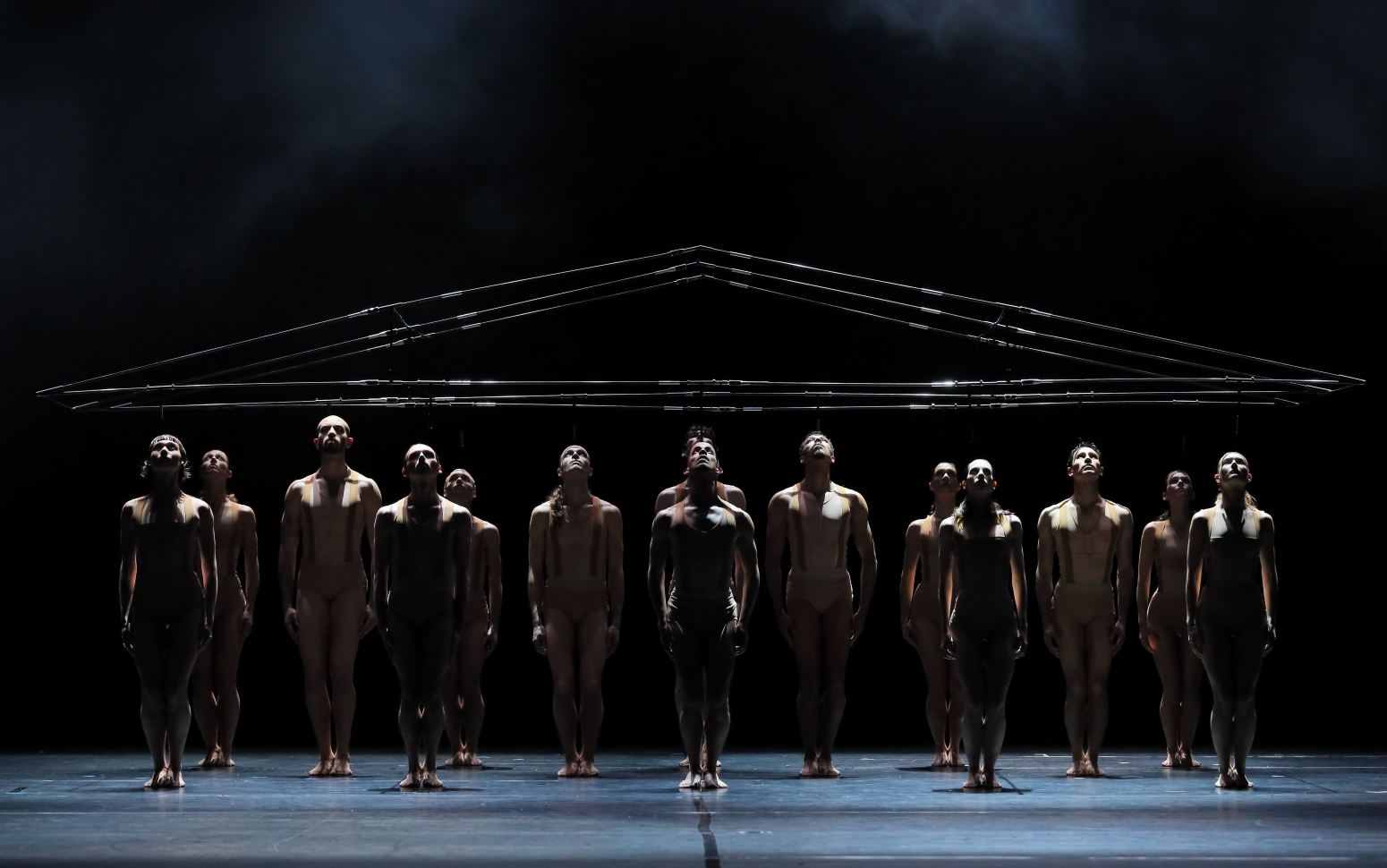 As in previous years, the Forum Ludwigsburg has made an effort to invite a wide range of dance companies to Ludwigsburg (which is about seven and a half miles north of Stuttgart) during this season. Munich’s State Ballet of the Gärtnerplatztheater was the first troupe to pay a visit. They presented their recently premiered one-act piece Troja (Troy) by Andonis Foniadakis. The Greek-born Foniadakis danced with the Béjart Ballet and the Ballet de l’Opéra de Lyon during which time he also began to choreograph. In 2003 he founded his own company, Apotosoma, and from 2016 to 2018 he was the artistic director of the Greek National Opera.
As in previous years, the Forum Ludwigsburg has made an effort to invite a wide range of dance companies to Ludwigsburg (which is about seven and a half miles north of Stuttgart) during this season. Munich’s State Ballet of the Gärtnerplatztheater was the first troupe to pay a visit. They presented their recently premiered one-act piece Troja (Troy) by Andonis Foniadakis. The Greek-born Foniadakis danced with the Béjart Ballet and the Ballet de l’Opéra de Lyon during which time he also began to choreograph. In 2003 he founded his own company, Apotosoma, and from 2016 to 2018 he was the artistic director of the Greek National Opera.
Troja is based on Euripides’s tragedy, The Trojan Women, the intricate plot of which Foniadakis distilled to two overarching themes: the aftermath of war in general and the fate of the women—on the loser’s side in particular.
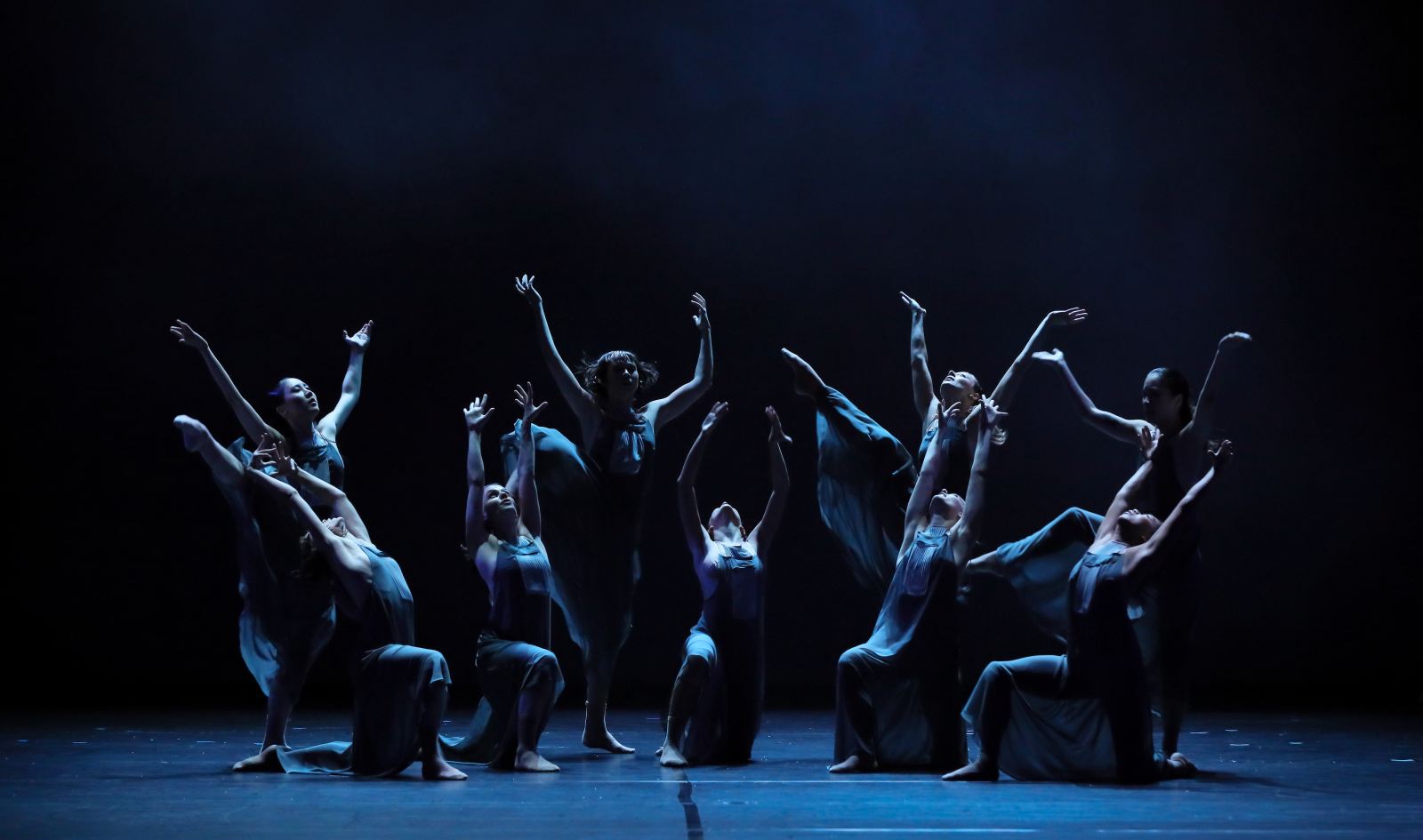
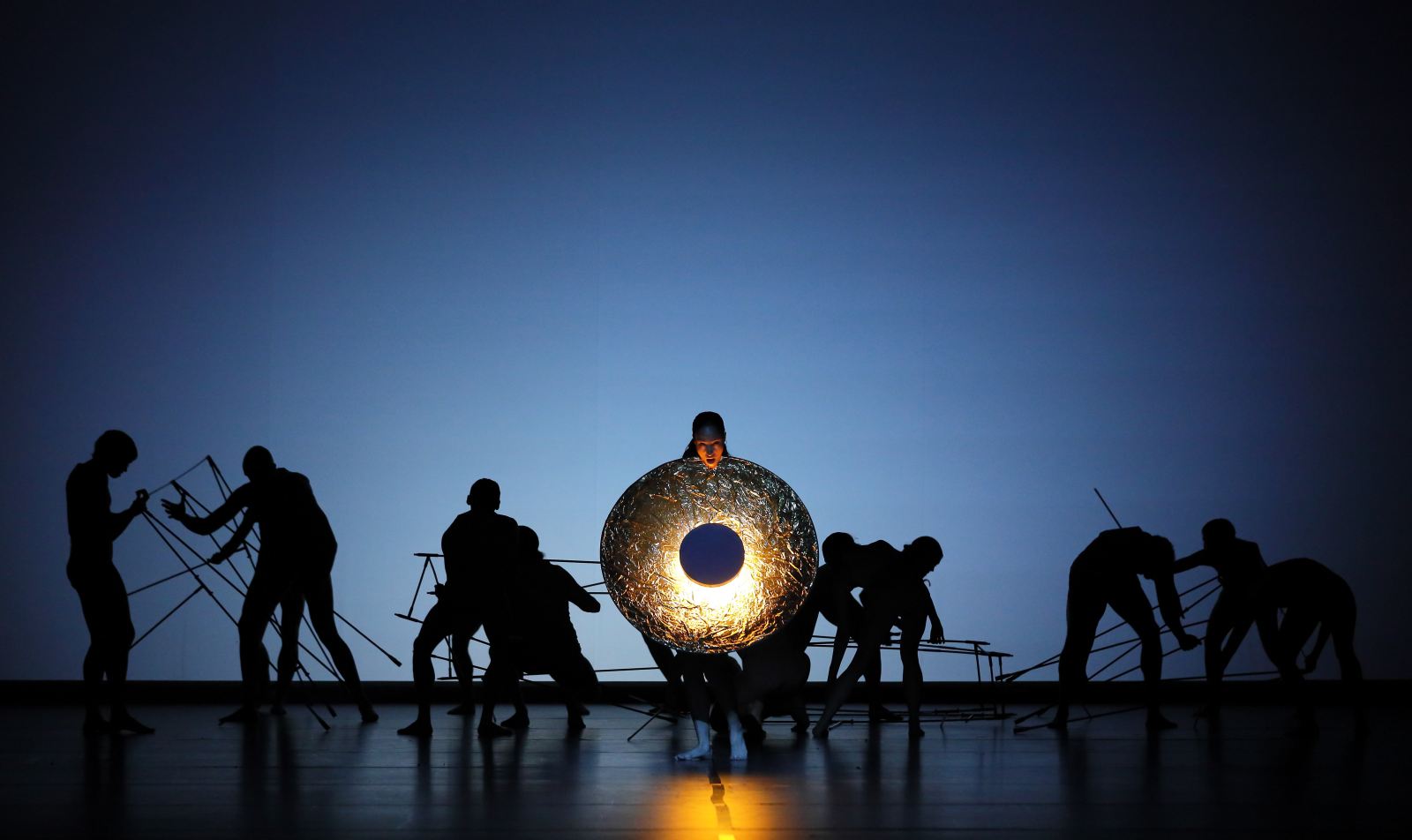 The opening scene was promising. Two lines of fourteen men and women moved in sync under a roof framework of metal rods fixed to their chests by almost invisibly thin sticks. They seemed to carry the remnants of their home or, symbolically, their ancestors’ legacy. Being united under the same roof seemed to give them strength but, at the same time, tied them to their positions. A steady thunder of percussion (played live by the Orchestra of the Gärtnerplatztheater) like the impact of distant missiles dictated the rhythm of their movements.
The opening scene was promising. Two lines of fourteen men and women moved in sync under a roof framework of metal rods fixed to their chests by almost invisibly thin sticks. They seemed to carry the remnants of their home or, symbolically, their ancestors’ legacy. Being united under the same roof seemed to give them strength but, at the same time, tied them to their positions. A steady thunder of percussion (played live by the Orchestra of the Gärtnerplatztheater) like the impact of distant missiles dictated the rhythm of their movements.
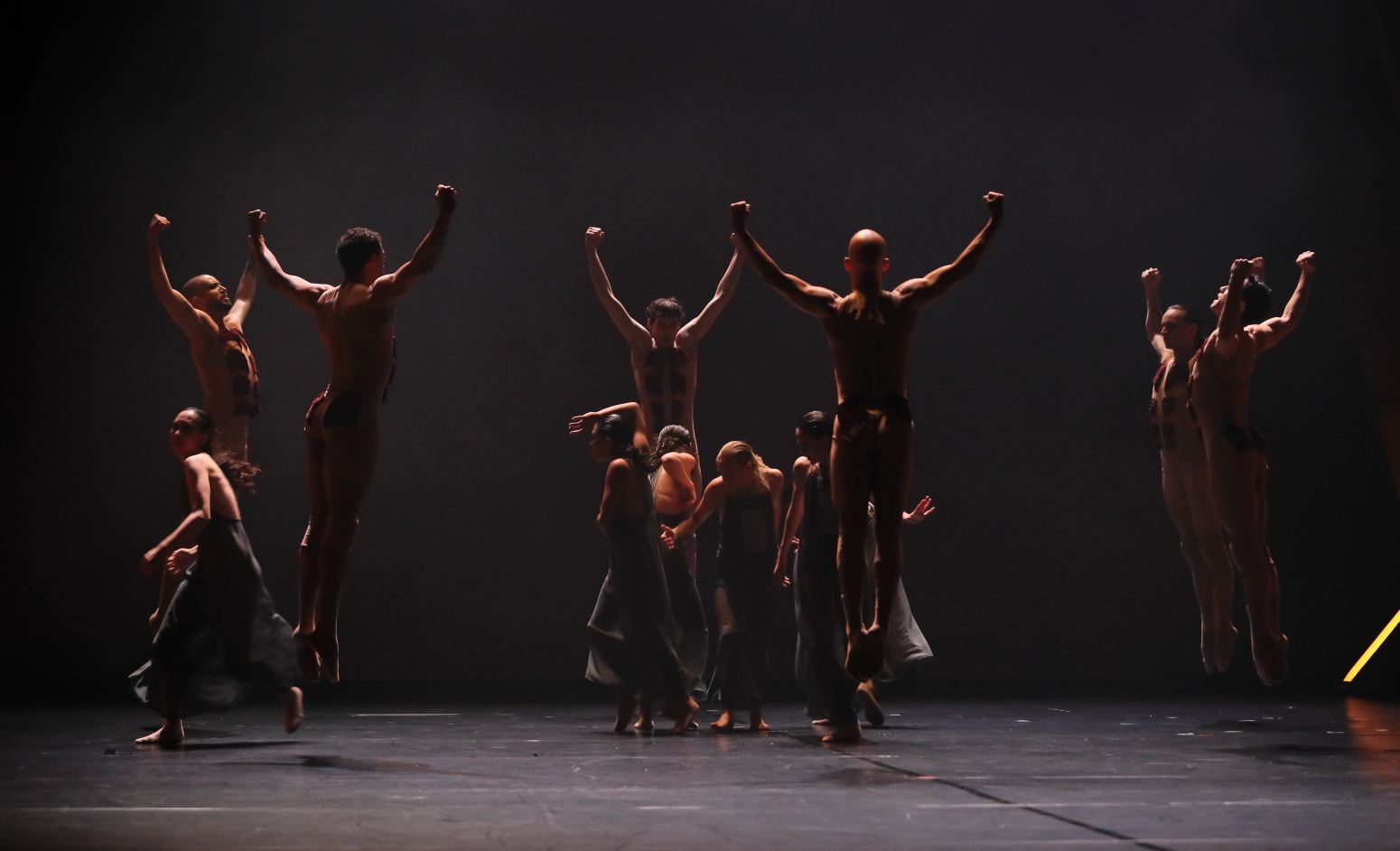
 They stepped forward and backward for a long time, slapping their thighs and chests, before picking up the pace. Their feet pounded the floor, and their arms swung determinedly. Then they lay down on their backs, and the roof framework covered them like a tent. Their energy faded like an engine stuttering to a halt, and the attention shifted to a gleaming golden shield that a woman carried on stage. The black circle at its center made it look like the pupil and iris of an eye (set design by Sakis Birbilis). The woman ran back and forth, sought cover behind the shield, and flailed her arms to create the impression of an imminent threat. But her fear wasn’t credible, and neither the flashy shield nor the ill-boding music could fill the void.
They stepped forward and backward for a long time, slapping their thighs and chests, before picking up the pace. Their feet pounded the floor, and their arms swung determinedly. Then they lay down on their backs, and the roof framework covered them like a tent. Their energy faded like an engine stuttering to a halt, and the attention shifted to a gleaming golden shield that a woman carried on stage. The black circle at its center made it look like the pupil and iris of an eye (set design by Sakis Birbilis). The woman ran back and forth, sought cover behind the shield, and flailed her arms to create the impression of an imminent threat. But her fear wasn’t credible, and neither the flashy shield nor the ill-boding music could fill the void.
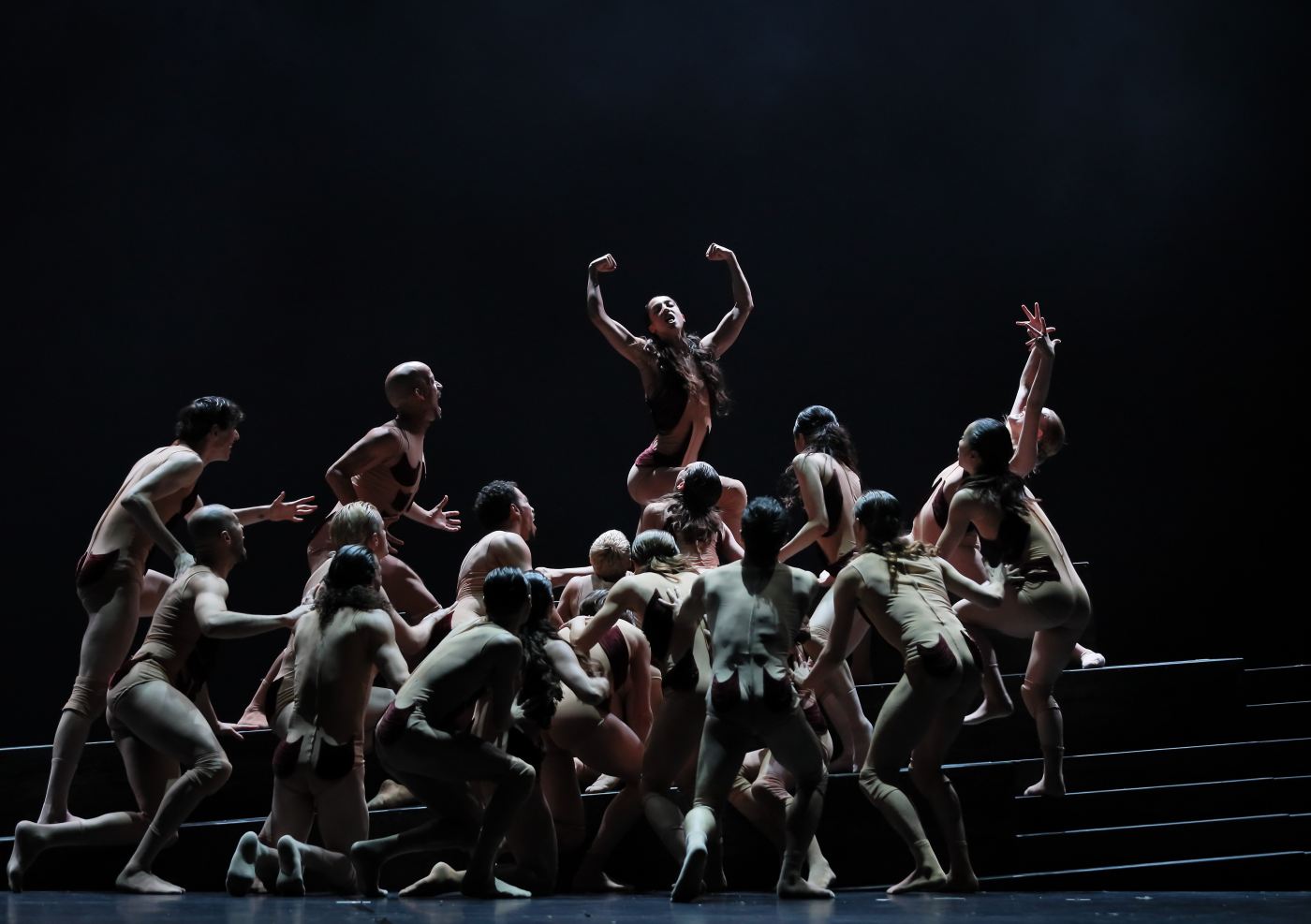
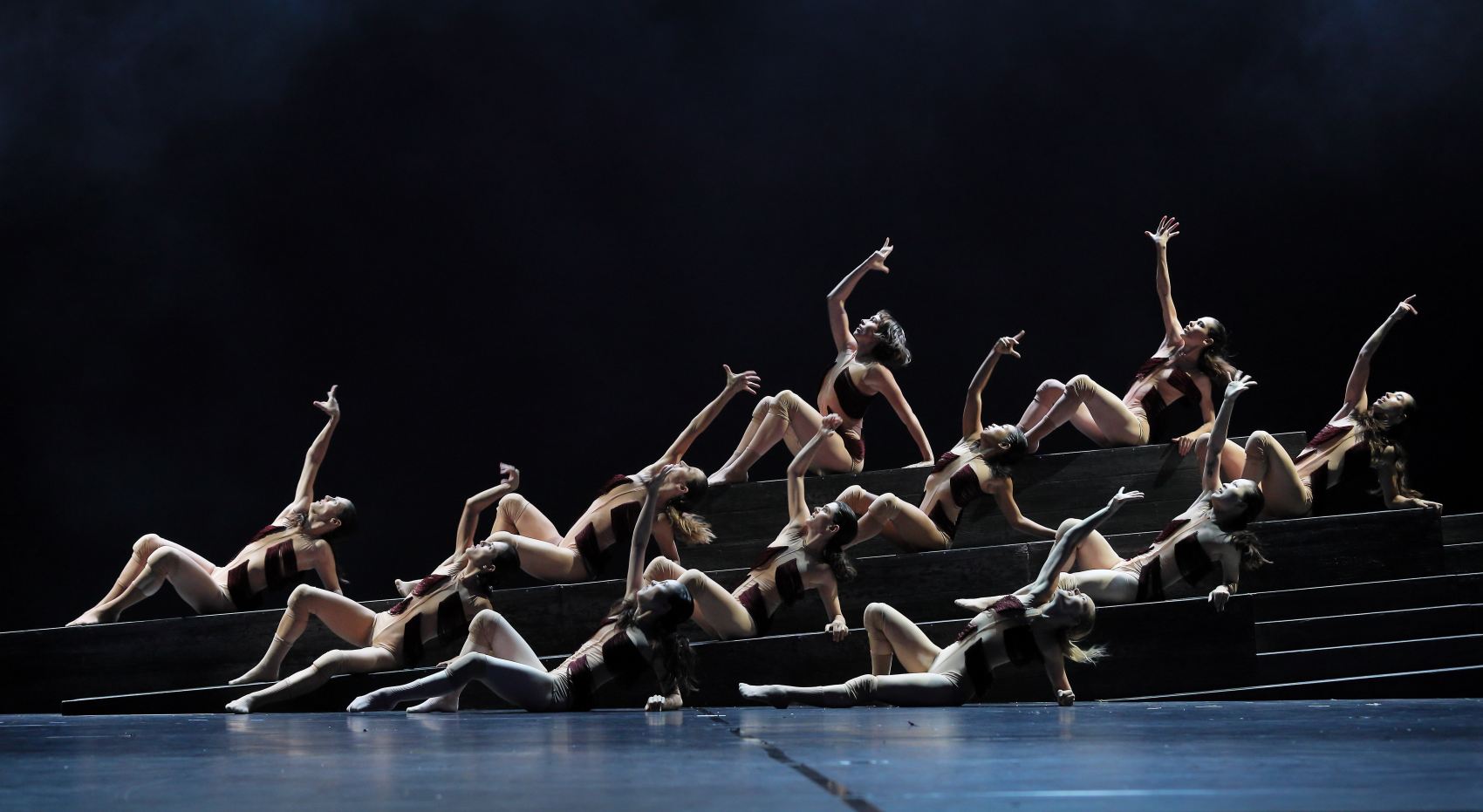 Meanwhile, black side wings and blade-like triangles slowly slid center stage, giving the restricted space a prison-like ambiance. It held captive a group of women who gesticulated wildly, rushed back and forth, and repeatedly threw themselves to the ground. Their distress dragged on until several men entered the prison and circled the cluster of women like warders. In Euripides’ tragedy, the women were divided among the men as spoils of war. Foniadakis had them hauled away from their huddle over and over again. Most women resisted and crawled back, and a few fled. Groups of men manhandled many of them at length. But suddenly, for an unknown reason, the tide turned, and the women overpowered their tormentors. They piled them on top of each other and, later, held one of the men above the other struggling bodies with his arms stretched sideways like a living cross and his mouth open and emanating a silent scream.
Meanwhile, black side wings and blade-like triangles slowly slid center stage, giving the restricted space a prison-like ambiance. It held captive a group of women who gesticulated wildly, rushed back and forth, and repeatedly threw themselves to the ground. Their distress dragged on until several men entered the prison and circled the cluster of women like warders. In Euripides’ tragedy, the women were divided among the men as spoils of war. Foniadakis had them hauled away from their huddle over and over again. Most women resisted and crawled back, and a few fled. Groups of men manhandled many of them at length. But suddenly, for an unknown reason, the tide turned, and the women overpowered their tormentors. They piled them on top of each other and, later, held one of the men above the other struggling bodies with his arms stretched sideways like a living cross and his mouth open and emanating a silent scream.
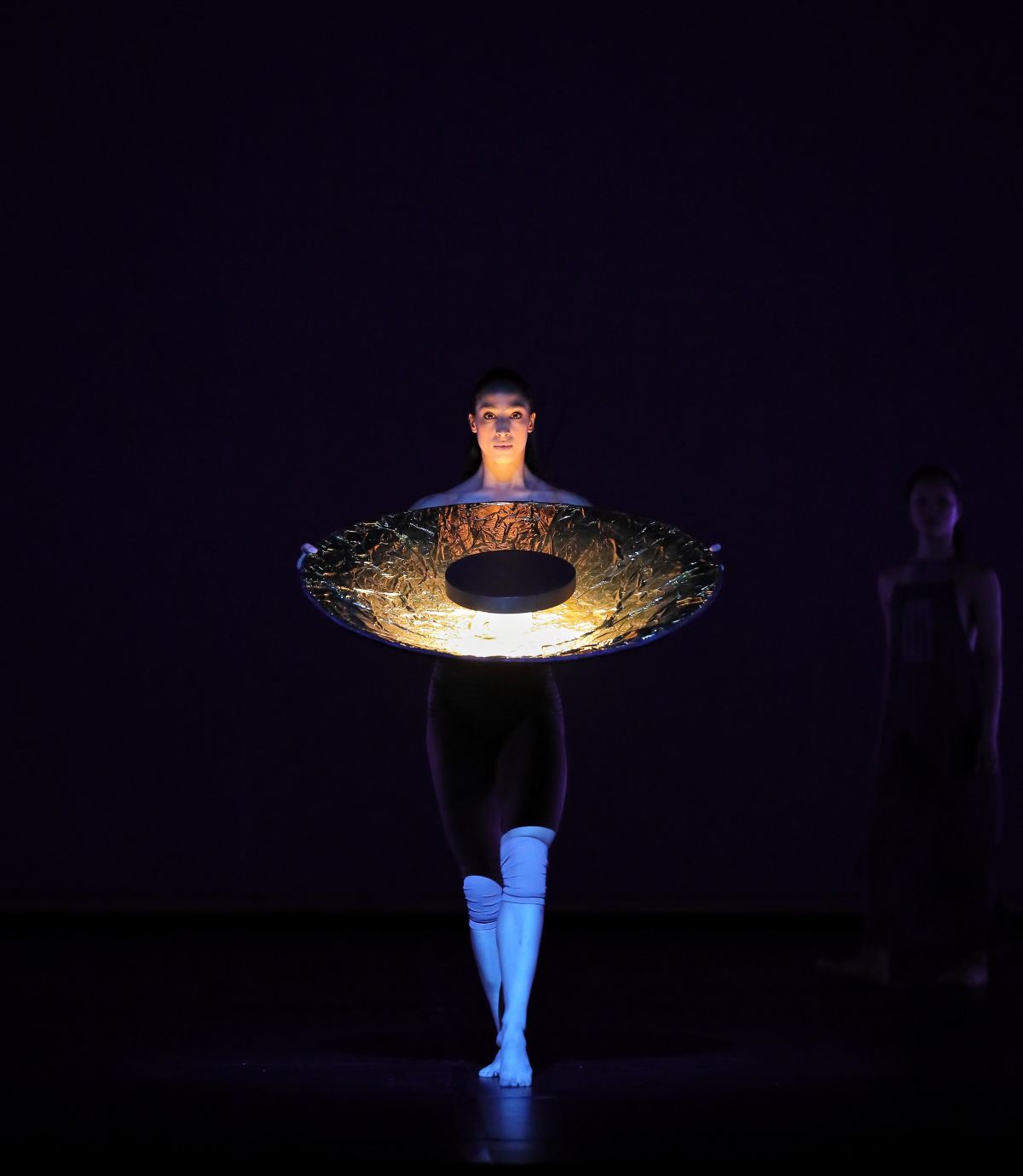
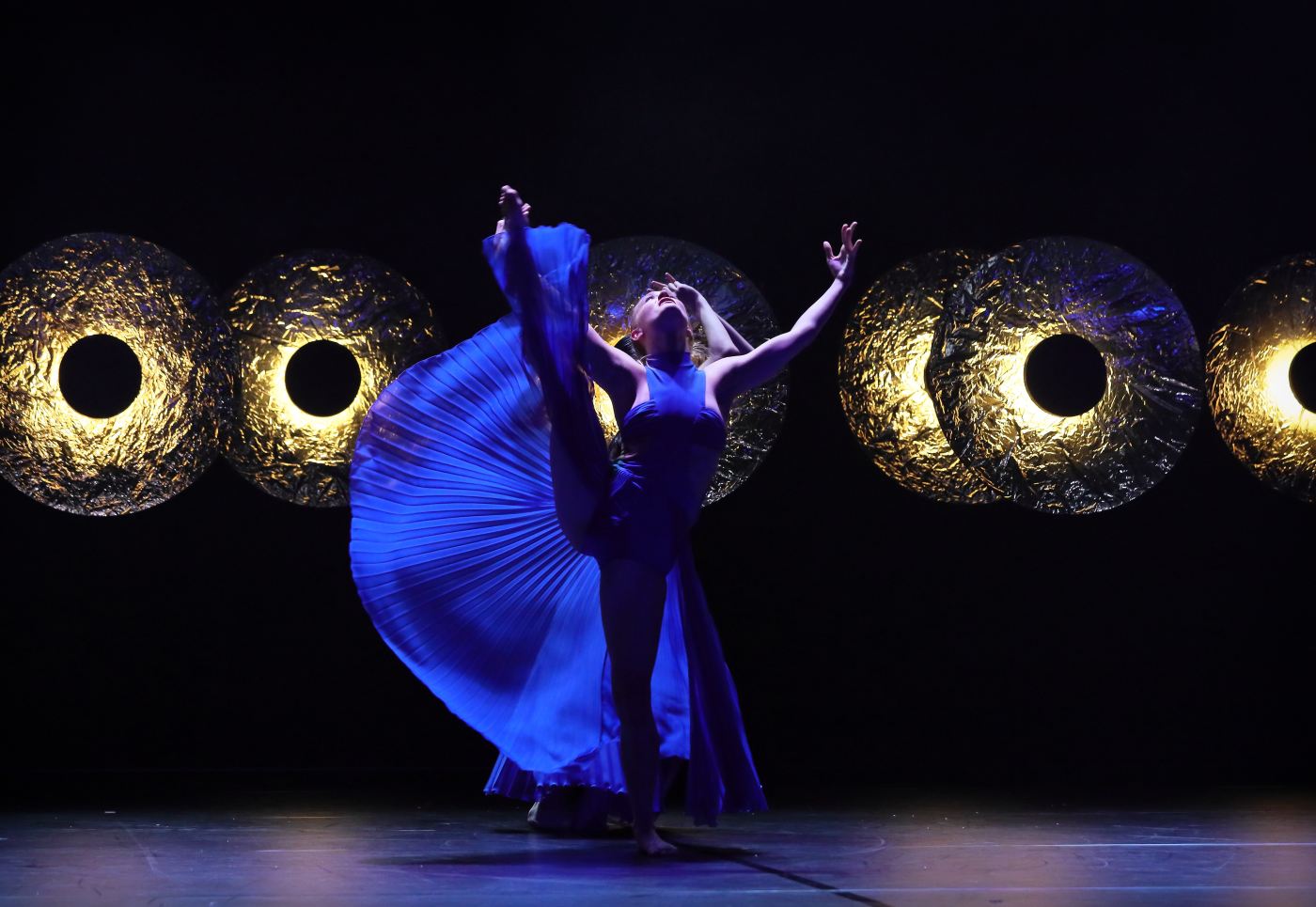 Soon, the men came to life again. Accompanied by the squeaking violins of an Arvo Pärt remake, they slapped their thighs and chests, crawled across the floor, and lifted one another. Some embraced each other on the floor, and others fought. But the sense and purpose of their actions remained unclear. The warrior who solemnly carried the limp body of his opponent in his arms before suddenly throwing him away like despicable waste might have portrayed Achilles and Hector. If so, the woman who bitterly mourned the dead must have been Hector’s wife, Andromache.
Soon, the men came to life again. Accompanied by the squeaking violins of an Arvo Pärt remake, they slapped their thighs and chests, crawled across the floor, and lifted one another. Some embraced each other on the floor, and others fought. But the sense and purpose of their actions remained unclear. The warrior who solemnly carried the limp body of his opponent in his arms before suddenly throwing him away like despicable waste might have portrayed Achilles and Hector. If so, the woman who bitterly mourned the dead must have been Hector’s wife, Andromache.
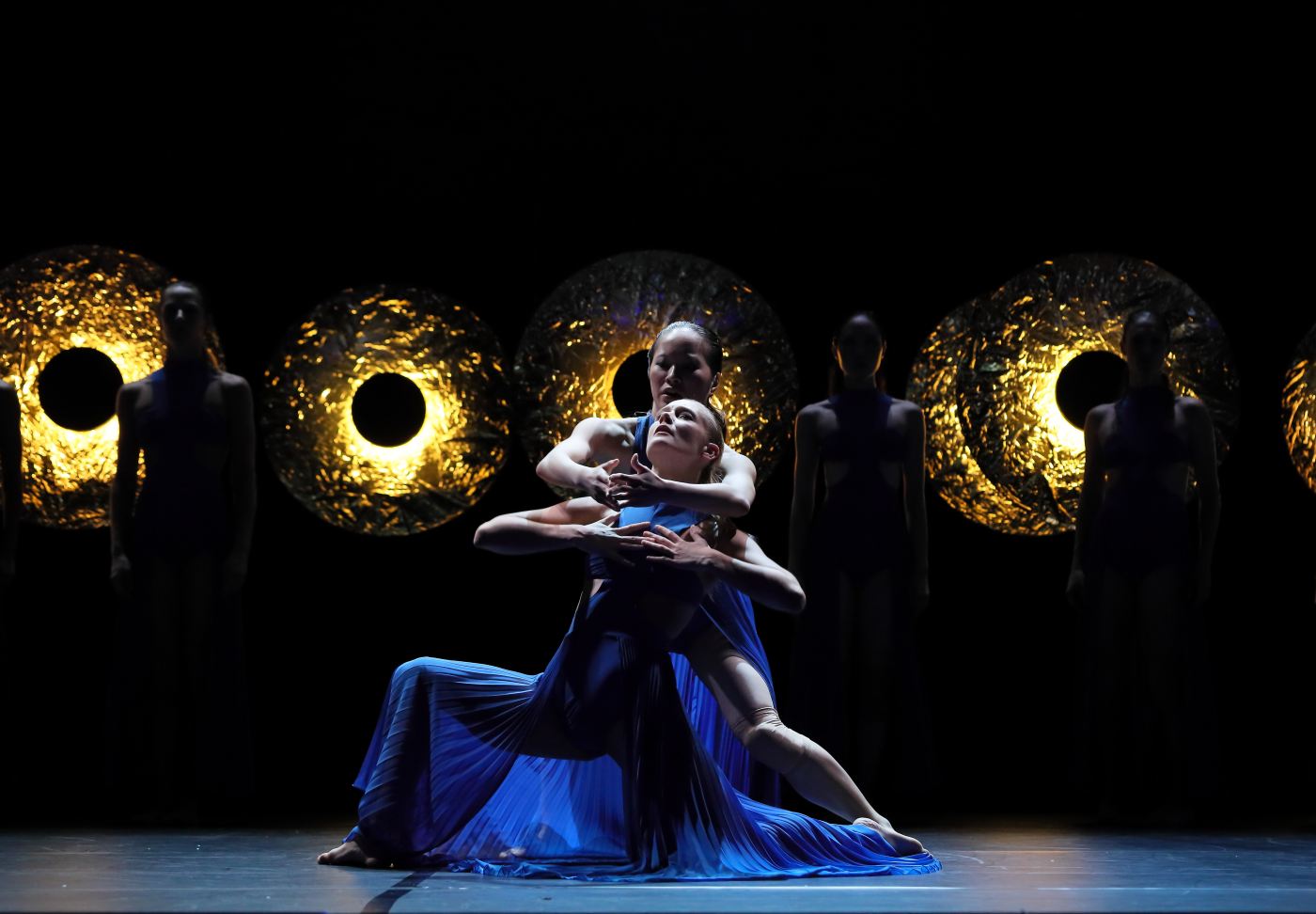 Cassandra’s prophecies were repeated several times by an English-speaking voice-over, the sound quality deteriorating with each repetition. I wasn’t sure if the priestesses of the oracle twisted their bodies in ecstasy or despair, but they did so with a frenzy that had worn off by then. Again, gleaming shields were used to divert from the repetitive choreography.
Cassandra’s prophecies were repeated several times by an English-speaking voice-over, the sound quality deteriorating with each repetition. I wasn’t sure if the priestesses of the oracle twisted their bodies in ecstasy or despair, but they did so with a frenzy that had worn off by then. Again, gleaming shields were used to divert from the repetitive choreography.
A quick push down the city wall killed Hector’s and Andromache’s son, Astyanax. The crowd screamed, threw their arms up, and left it to the music to fake agitation. Another (mainly) male mob coveted the beautiful Helen with animal-like lust. Partly defiant, partly aggressively lascivious, she seemed to fuel the craving. A man later carried her conquered body away.
Clattering horse’s hooves and chirping birds broke the silence after the storm. Astyanax, also called the child of Troy, was carried on a golden shield like a figure of worship. Accompanied by Arvo Pärt’s Mirror in the Mirror, the crowd returned. Although initially softened, their movements soon became as agitated as before. Hysterical laughter and shrieks indicated drama as the women were yet again dragged across the floor.
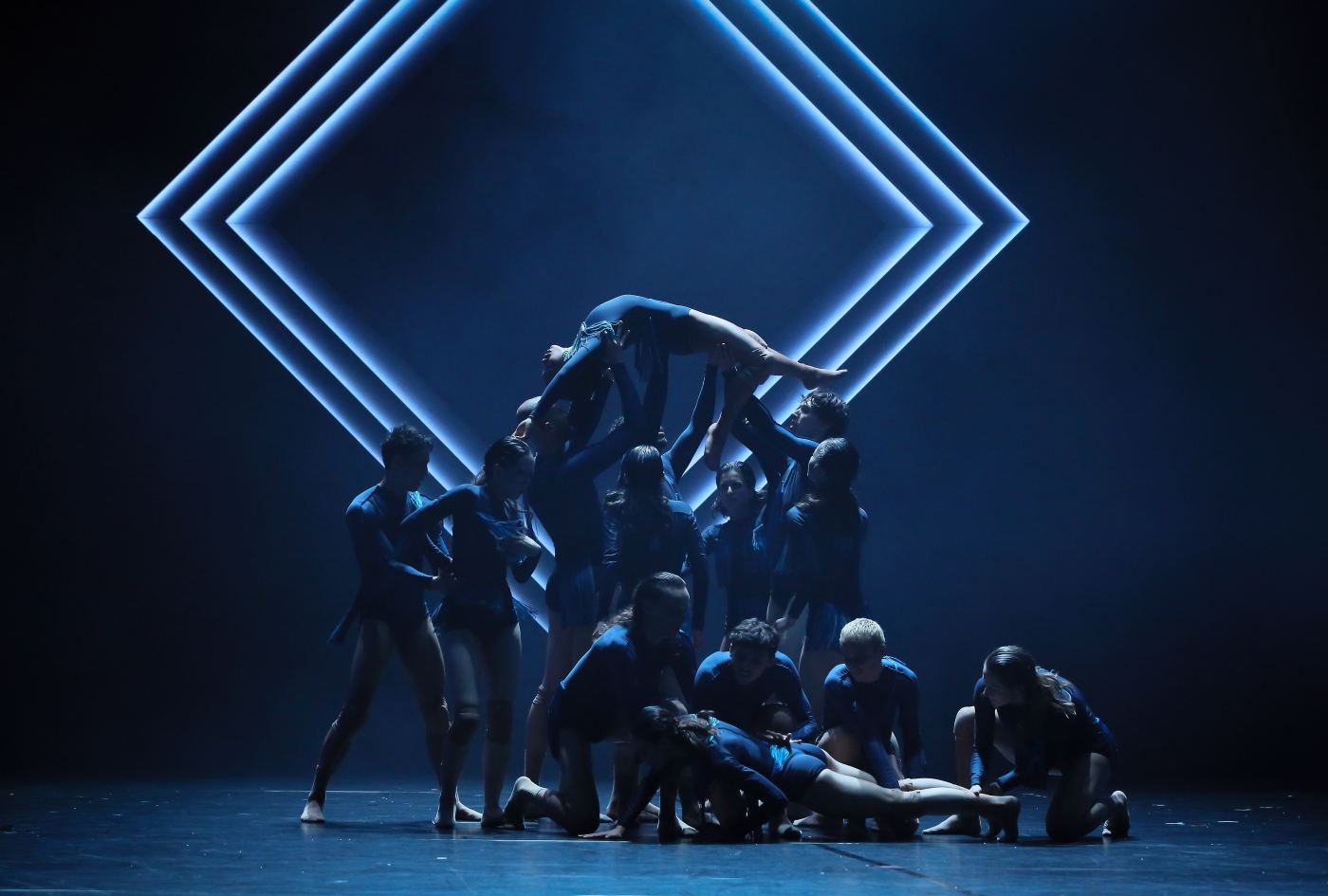
 Huge, shard-like triangles with sharp, red-lit edges guarded the final battle between a man and a woman, and their mirrored surfaces multiplied the conflict into countless fragments. As before, Foniadakis ambiguously portrayed the woman’s reaction. Though abused, she crawled up to the man and wrapped her legs around his waist. Seconds later, she tried to flee. Her breath appeared panicked when he forced himself between her legs. Although the curtain closed, it was clear that she would not escape. It felt as though ending this weak piece in this way was an attempt to use shock to hide artistic impotence.
Huge, shard-like triangles with sharp, red-lit edges guarded the final battle between a man and a woman, and their mirrored surfaces multiplied the conflict into countless fragments. As before, Foniadakis ambiguously portrayed the woman’s reaction. Though abused, she crawled up to the man and wrapped her legs around his waist. Seconds later, she tried to flee. Her breath appeared panicked when he forced himself between her legs. Although the curtain closed, it was clear that she would not escape. It felt as though ending this weak piece in this way was an attempt to use shock to hide artistic impotence.
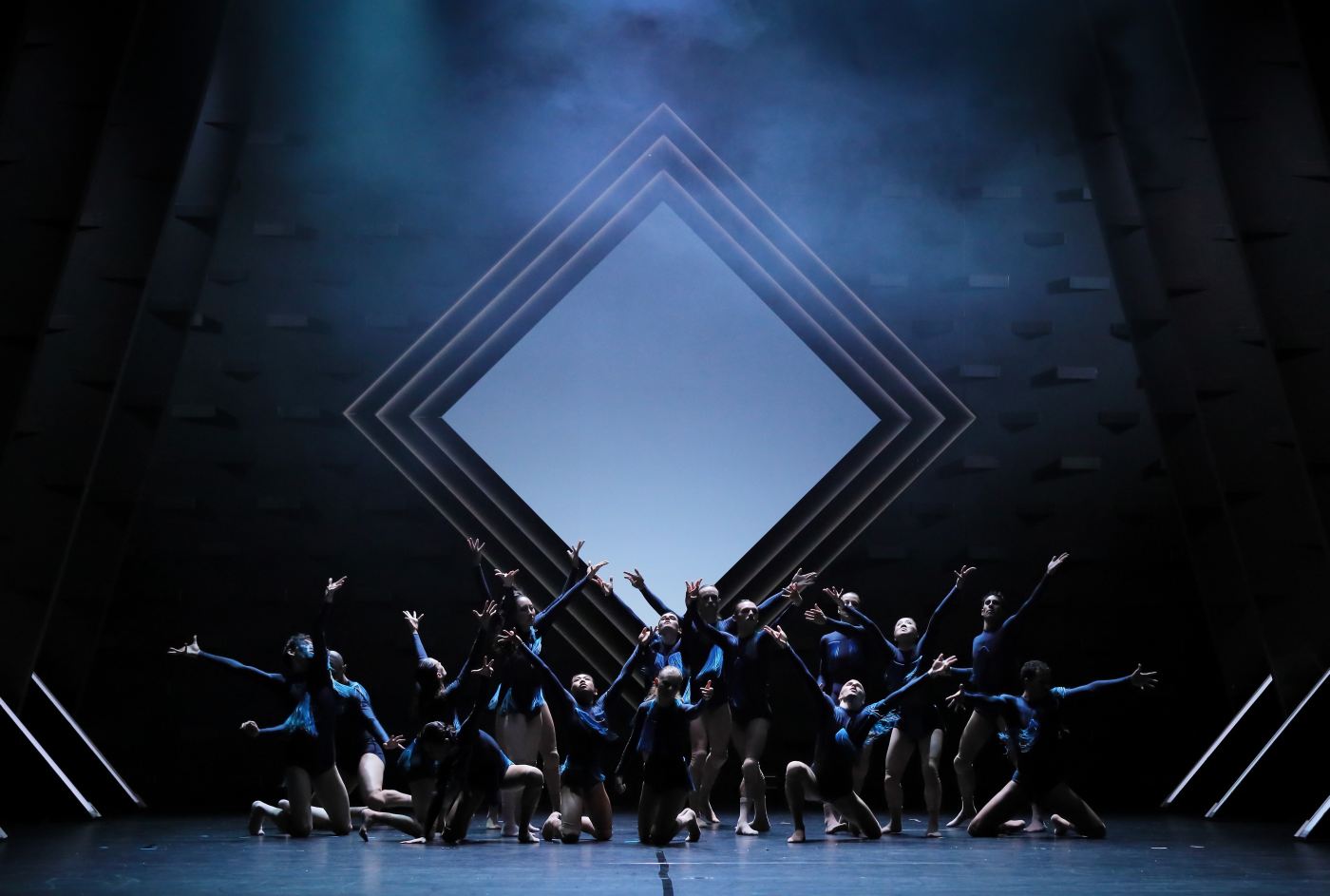
| Links: | Website of the Forum Ludwigsburg | |
| Website of the Gärtnerplatztheater | ||
| Trailer “Troja” | ||
| Photos: | 1. | Ensemble, “Troja” by Andonis Foniadakis, State Ballet of the Gärtnerplatztheater 2024 |
| 2. | Ensemble, “Troja” by Andonis Foniadakis, State Ballet of the Gärtnerplatztheater 2024 | |
| 3. | Ensemble, “Troja” by Andonis Foniadakis, State Ballet of the Gärtnerplatztheater 2024 | |
| 4. | Ensemble, “Troja” by Andonis Foniadakis, State Ballet of the Gärtnerplatztheater 2024 | |
| 5. | Willer Gonçalves Rocha, David Cahier, Amelie Lambrichts, Alexander Hille, and ensemble; “Troja” by Andonis Foniadakis, State Ballet of the Gärtnerplatztheater 2024 | |
| 6. | Ensemble, “Troja” by Andonis Foniadakis, State Ballet of the Gärtnerplatztheater 2024 | |
| 7. | Mariana Romão and ensemble, “Troja” by Andonis Foniadakis, State Ballet of the Gärtnerplatztheater 2024 | |
| 8. | Mariana Romão, “Troja” by Andonis Foniadakis, State Ballet of the Gärtnerplatztheater 2024 | |
| 9. | Montana Dalton, “Troja” by Andonis Foniadakis, State Ballet of the Gärtnerplatztheater 2024 | |
| 10. | Montana Dalton, Chia-Fen Yeh, and ensemble; “Troja” by Andonis Foniadakis, State Ballet of the Gärtnerplatztheater 2024 | |
| 11. | Ensemble, “Troja” by Andonis Foniadakis, State Ballet of the Gärtnerplatztheater 2024 | |
| 12. | Jana Baldovino and ensemble, “Troja” by Andonis Foniadakis, State Ballet of the Gärtnerplatztheater 2024 | |
| 13. | Ensemble, “Troja” by Andonis Foniadakis, State Ballet of the Gärtnerplatztheater 2024 | |
| all photos © Marie-Laure Briane | ||
| Editing: | Kayla Kauffman |



